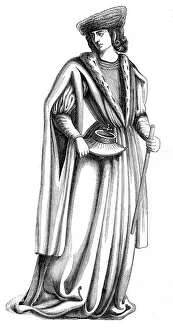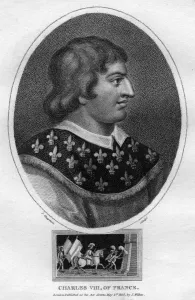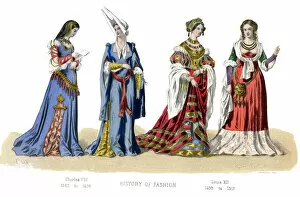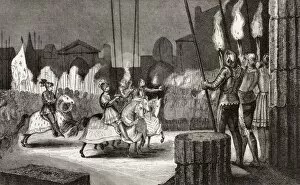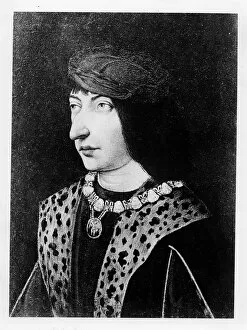Charles Viii Collection (page 2)
"Charles VIII: A Renaissance King and his Reign" In this captivating image, Louis de Bruges presents his book to the young and ambitious King Charles VIII of France
All Professionally Made to Order for Quick Shipping
"Charles VIII: A Renaissance King and his Reign" In this captivating image, Louis de Bruges presents his book to the young and ambitious King Charles VIII of France. The miniature from "The Book of Tournaments of Rene d Anjou" beautifully captures the intellectual pursuits that flourished during Charles' reign. From 1483 to 1498, Charles VIII ruled over a transformative period in French history. His determination to reunite Brittany with France is depicted in the engraving showcasing the reunion ceremony. This strategic move solidified his power and expanded the territories under his control. Not only a skilled diplomat, but Charles was also a military leader who engaged in numerous battles. The engravings depicting the Battle of Saint-Aubin-du-Cormier and Battle of Fornoue showcase his prowess on the battlefield, securing victories for France. Religion played an important role during Charles' reign as well. Pope Alexander VI is shown bestowing blessings upon him, highlighting their close relationship and mutual support. Additionally, an engraving depicts Charles restoring sacred shrines at St Denis Church - a testament to his devotion to Catholicism. Tragically, King Charles VIII's life was cut short at a young age. In an engraving capturing solemnity and mourning, we see King Louis XII beside his predecessor's coffin - symbolizing both respect for Charles' achievements and the passing of power. Despite these somber moments, there were also instances where joyous occasions took place during this era. An enchanting colored engraving showcases a shepherdess enjoying her pastoral life under Charles' rule - reflecting peace and prosperity within society. Architecture thrived during this time too; Chateau de Langeais stands as a magnificent example of Renaissance architecture commissioned by King Charles himself - demonstrating not only political might but also artistic patronage.


